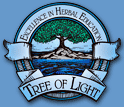By Steven Horne and Paula Perretty
In herbalism, there is no line between food and medicine. Many “medicinal” herbs have been eaten as food and many “foods” have medicinal value. Oats are an excellent example of a plant that is both a food and a medicine. With a long history of cultivation as a food crop, oats originated in three separate geographic regions, Abyssinia, the Mediterranean and China. Today, oats (Avena sativa) are grown in the U.S., Canada, Russia, Turkey, Iraq, UK, Spain and Germany.
The grain (seed) is harvested and milled to produce oatmeal and oat groats. The oat grain is a highly nutritious whole grain that has been used by natural healers as a food for the chronically ill to help restore vigor to the body.
Oatbran, made from the husks of the grain, is a great source of fiber for the colon. It has been shown to reduce cholesterol and reduce the risk of colon disorders and heart disease. Oatbran is found in LOCLO, a fiber supplement designed to lower cholesterol, Nature’s Three and Healthy Blast.
Another valuable part of the oat plant is the straw. This refers to the dried grass stalks and leaves from the oat plant. Oat grass, like wheat and barley grass, is a nourishing food with many nutritional benefits. Both the green oat grass (harvested when the plant is flowering) and the mature oat grass (after the seeds have been harvested) have been used as medicine.
Oat straw is primarily used as a source of minerals like potassium, phosphorus, magnesium, calcium, chromium, iron and selenium. It is a structure building remedy that helps build healthy bones, teeth, hair and nails. It has been traditionally used as a tea (or strong decoction) for this purpose. It is one of the key ingredients in the NSP formula Herbal CA (i.e., Herbal Calcium), which is used to enhance the structural system of the body and help bones and injured tissues heal.
Oatstraw is also an ingredient in a formula my midwife friend, Joan Patton, developed, which I call Herbal Minerals. You can make a great herbal mineral tea by combining equal parts alfalfa, nettles, oatstraw and red raspberry with a smaller amount of peppermint leaf. Make a decoction of this mixture by bringing a quart of water to a boil in a saucepan and adding one to two heaping tablespoons of the herbal mixture. Cover the pan, turn off the heat and allow the mixture to steep for at least 20 minutes.
Oats have also been used as a mild tonic for the nerves. The whole plant has this quality, but it is strongest in the seeds when they are in the milk sugar stage. Just like corn on the cob is juicy and sweet but dries into the grain we call corn, oat seeds are also sweet and juicy before they are fully mature. Herbalists harvest these milky seeds and tincture them to produce an excellent nerve tonic that helps rebuild enervated or “frayed” individuals.
Oats, including oatmeal, and oat straw also help the nerves. Oats act as a natural anti-depressant and mild sedative. Oat straw tea and the flower essence made from the oat flower have been used to aid the nerves in conditions such as headaches, depression, tension, insomnia, anxiety and feelings of melancholy and sadness.
Oatstraw tea has also been used as a blood tonic to aid circulation. It helps relieve hemorrhoids and varicose veins. It also boosts the immune system, gently supports the adrenals and stabilizes blood sugar levels.
Because of its reputation for enhancing libido, oatstraw is an ingredient in both X-Action for Men and X-Action for Women. The aphrodisiac effect probably has to do with oats ability to nourish the nerves, improve circulation and stabilize blood sugar. Increased sensitivity to touch, improved blood flow and enhanced energy will help anyone feel better.
Selected References
- PDR for Herbal Medicines published by Medical Economics Company.
- Drugs & Natural Alternatives by Clell M. Fowles.
- Handbook of Energy Crops by J. Duke.
- Healing Wise by Susun Weed

